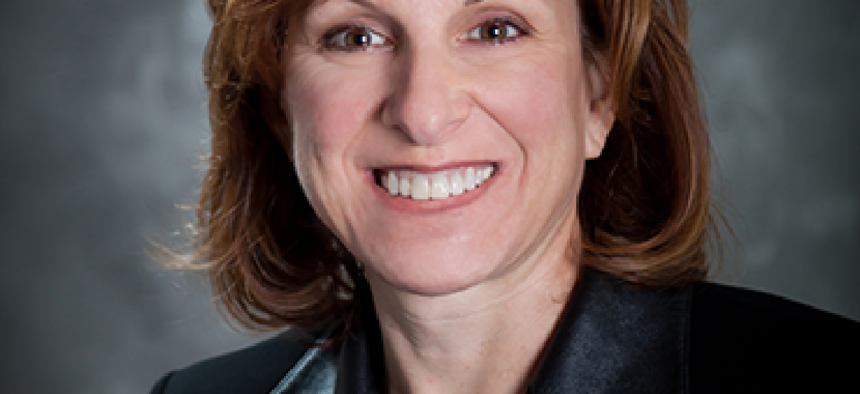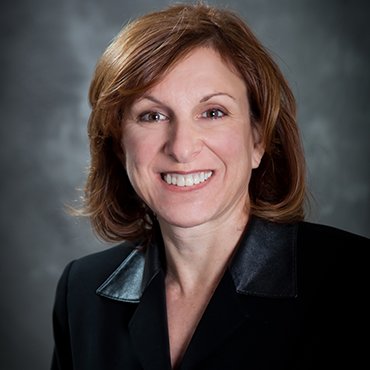NIST cybersecurity center moves into high gear

Donna Dodson, who heads the center, describes its mission, priorities and strategy.

Donna Dodson heads the National Institute of Standards and Technology's National Cybersecurity Center of Excellence.
For more than 150 years, the National Institute of Standards and Technology has toiled in the background of federal operations, carrying out the nation's business of science ranging, as its website points out, from nanotechnology to skyscrapers and jetliners. Today, that tradition endures, but one key mission is raising the agency's profile: cybersecurity.
In his February executive order on cybersecurity, President Barack Obama directed NIST to create a framework that would help government and the private sector better protect networks and information. The latest legislation on cybersecurity also focuses on NIST and its role as a leader in securing U.S. assets in cyberspace.
To support a mission that is certain to grow in scope and significance, the agency last year launched its National Cybersecurity Center of Excellence (NCCOE). Based near NIST's Gaithersburg, Md., headquarters, the center started off as a concept but over the last year has grown into a hive of activity. With the help of the center and its personnel, NIST will release an initial cybersecurity framework in October.
Donna Dodson, division chief of NIST's computer security division and acting executive director of the NCCOE, recently sat down with FCW's Amber Corrin to talk about the center, its work and what she hopes to accomplish.
FCW: What exactly is the NCCOE, and what are you doing there?
Donna Dodson: The purpose of the center is to help with the broad adoption of cybersecurity tools and technologies that are currently available, to get them in use and get people understanding how to use them throughout the lifecycle.
We have good technologies available today from the commercial side. How do we maximize the capabilities that are there, and where do we need innovation to grow to meet the demands where the technology isn't up to where it should be? That's really the heart and soul of what we're trying to do.
FCW: How does the NCCOE support provisions in President Obama's executive order, which focuses heavily on public-private partnership?
DD: The foundation of the center has been on a public-private partnership. That is at the core of what we're doing, so we have the IT industry coming in as long-term partners with us so that we're using technologies and capabilities that you can go out and purchase, that are built on those standards, best practices and use cases. It's about working with different communities like utilities, financial, manufacturing, health care, transportation and the federal government.
It's also important to have that conversation with not just cybersecurity practitioners – starting with the business requirements first and then working your way into the cybersecurity platform. You have to understand what the business environments are like and you have to think about the information, the environment and the users in order to build out cybersecurity in a meaningful way.
FCW: So it seems like the Center of Excellence is a clearinghouse for all these different communities to come together and explain what they need.
DD: Yes, and to work with them on these business requirements and work with the community as a whole to complete blueprints. Then they can go back and work with their CIO shop, or perhaps they're working with some integrators, and say, "Here's a blueprint of the things that we need to do. Help us in our own environment."
FCW: Where does the COE fit in with the creation of a cybersecurity framework?
DD: Being able to work with the critical infrastructure communities and working together at building this out is one way to meet requirements laid out in that framework.
I can easily envision as the framework solidifies, the NCCOE being able to work with the build-out of functions and categories, based on standards, with different critical infrastructure communities. Also, as we see additional gap areas, being able to work with them on those gaps, understanding what they are and what the requirements look like. Then that gets fed back into NIST and the standards bodies.
So you can see an evolution of standards and best practices that drives the center. Then the center identifies where we need more work, and that drives back the standards and best practices we need on a national and international basis.
FCW: Cyber workforce has been a big issue – both in the executive order and in subsequent directives. For example, agencies have been directed to take stock of their in-house capabilities. What kind of role does the COE play in the workforce aspect?
DD: I think as you're working from business requirements down to cybersecurity platforms, you begin to understand the lifecycle of that platform, what you need to build and maintain it, what your users need to be doing. So it informs the workforce and helps validate the types of competencies that they've identified, and how well they fit in the technology space.
We work with the business owners who are working to meet different legal and policy challenges as they put this into play. So understanding those challenges from a workforce perspective and management perspective is equally as important as the bits and bytes folks. NIST spends more time with the bits and bytes folks ... but we're working to bring in more students into the center so we can take advantage of their expertise and capabilities, and they can learn more about cybersecurity from that practical perspective and what it means to build it out.
Those kinds of students can range: the engineers and computer scientists, but also sociologists and cognitive scientists that help us understand how we interact with technology. The end user aspect can't be underplayed in addressing our cybersecurity challenges. You have to provide tools and techniques that make it easy to do the right thing and hard to do the wrong thing.
The center, NIST's National Initiative for Cybersecurity Education and the executive order all come together to create that culture of cybersecurity that we need in organizations.
NEXT STORY: White House Employees’ Personal Email Hacked


